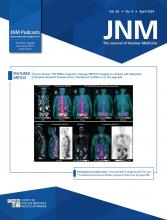Abstract
Background: Reactive gliosis changes, characterized by reactive astrocytes and activated microglia, contribute greatly to neurodegeneration throughout the course of Alzheimer’s disease (AD). Reactive astrocytes overexpress monoamine oxidase-B (MAO-B). We characterized the clinical performance of 18F-SMBT-1, a novel MAO-B PET tracer as a potential surrogate marker of reactive astrogliosis. Methods: Seventy-seven participants –53 controls (CN), 7 mild cognitively impaired (MCI), 7 AD patients, and 10 young controls (YCN)– were recruited for the different aspects of the study. Older participants underwent 3D-MPRAGE MRI and Aβ, tau, and 18F-SMBT-1 imaging with PET. To ascertain 18F-SMBT-1 selectivity to MAO-B, 9 participants underwent two 18F-SMBT-1 scans, before and after receiving 5mg selegiline twice daily for 5 days. To compare selectivity, 18F-THK5351 studies were also conducted before and after selegiline. Aβ burden was expressed in Centiloids. 18F-SMBT-1 outcomes were expressed as standard uptake value, as well as tissue ratios and binding parameters using the subcortical white matter as reference region. Results: 18F-SMBT-1 showed robust entry into the brain and reversible binding kinetics, with high tracer retention in basal ganglia, intermediate in cortical regions, and lowest in cerebellum and white matter which tightly follows the known regional brain distribution of MAO-B (R2=0.84). More than 85% of 18F-SMBT-1 signal was blocked by selegiline across the brain and, in contrast to 18F-THK5351, no residual cortical activity was observed after the selegiline regimen, indicating high selectivity for MAO-B and low non-specific binding. 18F-SMBT-1 also captured the known MAO-B increases with age, with an annual rate of change (~2.6%/yr), similar to the in vitro rates of change (~1.9%/yr). Quantitative and semiquantitative measures of 18F-SMBT-1 binding were highly associated (R2>0.94), suggesting a simplified tissue ratio approach could be used to generate outcome measures. Conclusion: 18F-SMBT-1 is a highly selective MAO-B tracer, with low non-specific binding, high entry into the brain and displaying reversible kinetics. Moreover, 18F-SMBT-1 brain distribution matches the reported in vitro distribution and captures the known MAO-B increases with age, suggesting 18F-SMBT-1 can potentially be used as a surrogate marker of reactive astrogliosis. Further validation of these findings with 18F-SMBT-1 will require examination of a much larger series, including participants with MCI and AD.
- Copyright © 2022 by the Society of Nuclear Medicine and Molecular Imaging, Inc.







